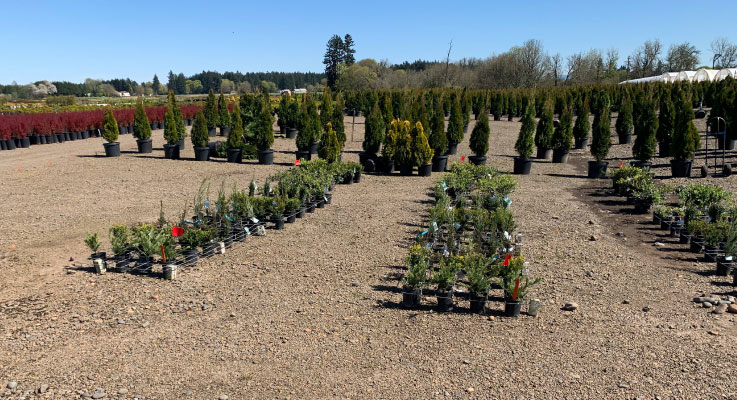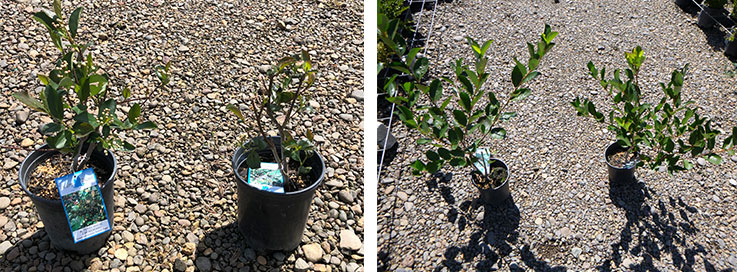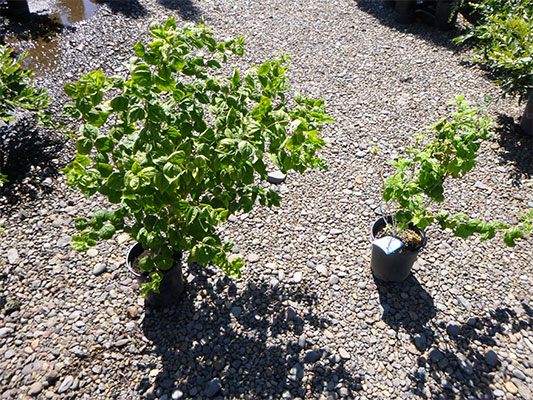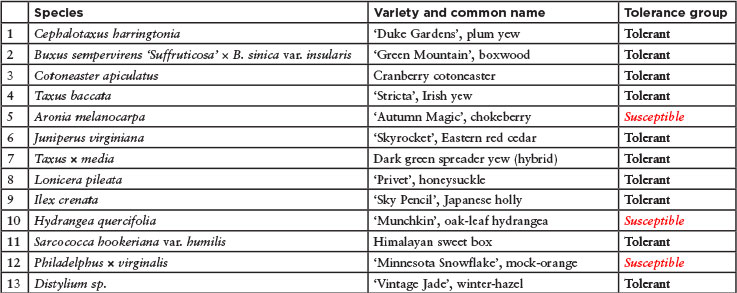Herbicide’s label allows growers to experiment with various plants and levels

Herbicides are an important weed control method in container-grown ornamental plants. Knowledge of crop tolerance to herbicides is essential for a safe and effective weed control program.
Tolerance to a specific herbicide application method depends on the crop species and the cultivar. Thus, developing labels for herbicide products for ornamental crops requires extensive testing. For example, the label of the herbicide Marengo® (indaziflam) lists the species and cultivars known to be tolerant to Marengo. Although many species are listed on the label, there are commercially grown plants whose tolerance status is not known.
For plant species not yet listed, the label suggests testing multiple plants at the highest rate (9 fl. oz./acre) followed by 1−2 months of evaluation.
How to test for herbicide tolerance
In this article, I will layout my suggestions for how to do such testing.
Select rates to be tested. I suggest at least three rates – unsprayed check, highest label rate (9 fl oz), and twice the field rate (18 fl. oz./acre).
Test at least three individuals of each of each species at each herbicide rate. For the rates suggested, a minimum of nine plants for each species and cultivar would be required.
Include a tolerant species listed on the label as an additional check subject.
Apply the herbicide in early spring. Herbicide injury is easier to observe in fast-growing plants.
Irrigate within one hour after application.
Watch for injury symptoms every two weeks for the first two months. Some injuries may be temporary and less visible as time after the application passes.
Compare plant growth. Herbicide injury may sometimes be mild and only detected through careful side-by-side comparison. Growth stunting reduces productivity and increases costs.
Following these steps, we conducted a crop tolerance study in a commercial nursery during the spring of 2021. Twelve species plus an indicator species (boxwood) were selected for the study. See Table 1.
In our study, Marengo was applied over the tops of the plants at three rates: 6, 9, and 18 fl. oz./acre. The nontreated check was not sprayed (Figure 1). Crop damage was monitored every two weeks for the following two months.
Most of the tested species were not affected by Marengo application up to 18 fl. oz./acre during the two months of evaluation; these were classified as ‘Tolerant.’ The tolerant species include boxwood, plum yew, cotoneaster, honeysucker, and others (Table 1).
The susceptible species were ‘Autumn Magic’ chokeberry, ‘Munchkin’ oak-leaf hydrangea, and ‘Minnesota Snowflake’ mock-orange (Table 1). Damage to ‘Autumn Magic’ chokeberry was most visible two weeks after the application. This was followed by a near-complete recovery over the course of the study. However, after two months, some plants were smaller than the unsprayed plants (Figure 2).

By contrast, ‘Munchkin’ oak-leaf hydrangea and ‘Minnesota Snowflake’ mock-orange presented severe injury for the entirety of the study. Two weeks after treatment, ‘Munchkin’ oak-leaf hydrangea showed extensive damage even at lower rates of Marengo. At higher rates, that damage progressed to plant death rates (Figure 3).

‘Minnesota Snowflake’ mock-orange was severely affected by Marengo but recovered somewhat, although the plants treated with Marengo were smaller (Figure 4). In summary, testing crop tolerance to Marengo can allow growers to expand its use in nurseries, with greater confidence. Any plant classified as susceptible in Table 1 should not be treated with Marengo.

Acknowledgments:
The authors would like to acknowledge Blue Heron Farm and Bayer Environmental Sciences.
Marcelo L. Moretti is an assistant professor and researcher in the Department of Horticulture at Oregon State University. He can be reached at 541-737-5454 or [email protected].
David King is a faculty research assistant in the Department of Horticulture at Oregon State University. He can be reached at [email protected].



